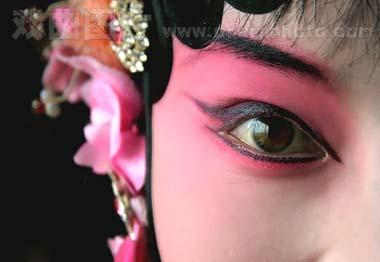Chinese opera masks and facial paintings
2009-06-19 17:17 BJTFacial paintings
It was actually during the Song dynasty that substantial representations of painted faces were revealed in the tomb murals. And accordingly, this later evolved into something more artistic, creative, and innovative. Masks were evidently used alongside the escalating skills among crafters and painters; the masks have in time evolved into full color designs and themes, representing various performing roles, human moods, and emotions.
 |
Historically, the imperial court has established an agency (Shengpingshu) that has taken care of the many affairs of opera performances. Shengpingshu had consequently required several imperial painters to paint vibrantly in color portraits of different characters, make up full costumes furthering to count to 200 operas. Fortunately, the characters portraits were all decorated and painted through superb strokes to manifest the pictures complete details.
 |
Numerous books and magazines on traditional opera increased in China during early 1900s. Many enthusiast professionals have later began taking on collecting publication resources on the different designs of face paintings. These collections were afterwards sorted and arranged into some standard patterns or design. Since then, the traditional opera’s facial makeup has progressively envisioned a drift of harmonization.
So while the opera performance is firmly based on allusion, such as footwork, gestures, and other body motions, carrying the opera with even an elaborated Chinese opera masks further intensifies and enhances the entire acting or role playing. Use of Chinese opera masks creates more meaning to the story or opera, and more fascination or interest among the various range of audience.
Editor: Zhao Yanchen | Source: CCTV.com
 Mail
Mail Share
Share Print
Print


 Video
Video









 2009 China Central Television. All Rights Reserved
2009 China Central Television. All Rights Reserved